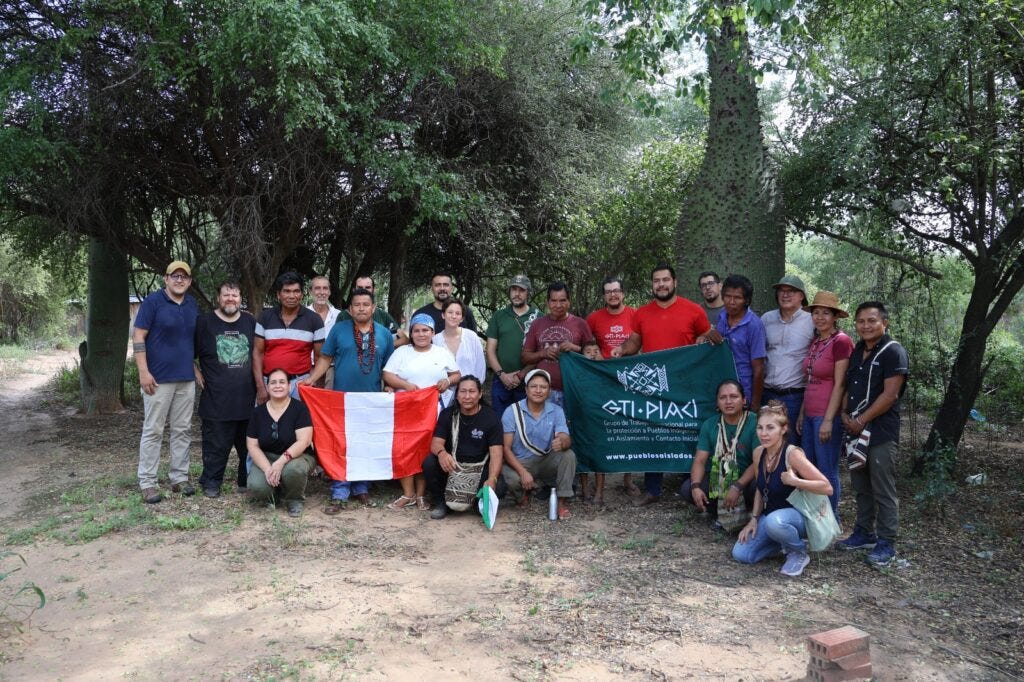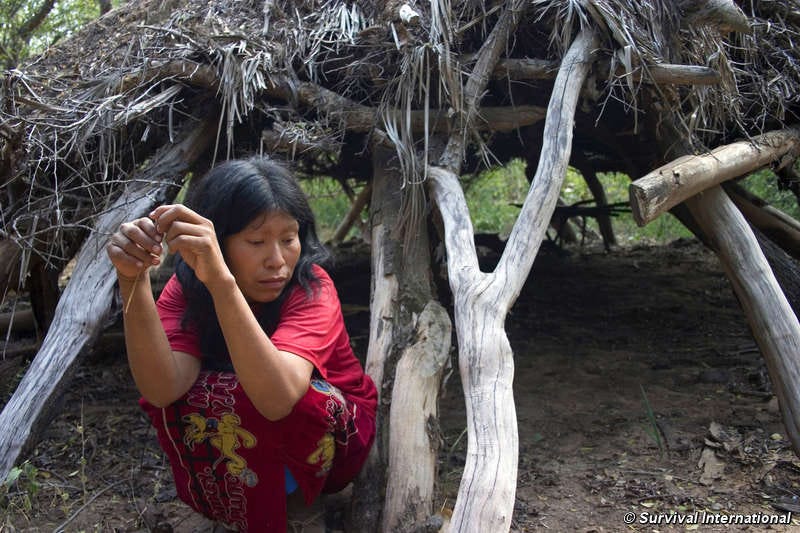Can the Uncontacted Ayoreo Be Saved?
Miguel Ángel Alarcón: Paraguay is failing its last isolated people.

Think of uncontacted South American peoples, and you probably think of remote tribes in the Amazon Rainforest in Peru or Brazil. But the Chaco region of northern Paraguay is also home to a native people living in isolation: the Ayoreo.
Most of the Ayoreo were forcibly contacted in the 1960s and made to live in missionary settlements, marked by deep poverty and social exclusion to this day. But experts estimate that over a hundred of these tough, nomadic people still hold out in the intact stretches of Chaco forest along the border with Bolivia.
These small family groups hunt, forage, and occasionally plant crops to survive, as well as taking tools and supplies from nearby villages and ranches. Their presence has been confirmed not only through regular sightings, but through footprints, clan marks cut into trees, temporary dwellings and discarded objects.
But their survival is severely threatened, campaigners say, by rampant deforestation, the climate crisis, and huge infrastructure projects like the Bioceanic Road Corridor.
The Ayoreo — both contacted and still living in isolation — were cast into the spotlight this month after Argentine guide Wenceslao Benoit, 77, went missing in the Defensores del Chaco National Park, a traditional Indigenous territory.
Settled Ayoreo leaders warned that the frantic search-and-rescue effort, including planes and helicopters, risked triggering violent contacts. And it was a group of Ayoreo volunteer trackers that discovered Benoit’s remains several days later. Had they been approached earlier, they told reporters, he might have been rescued alive.
To learn more about the Ayoreo and the struggle to protect their way of life, The Paraguay Post spoke with Miguel Ángel Alarcón, the coordinator of Iniciativa Amotocodie, a Paraguayan NGO founded in 2002 that defends the right of uncontacted Ayoreo groups to remain in isolation. This interview has been lightly edited for length and clarity.

Who are the Ayoreo, and how have their lives changed since contact?
The Ayoreo are a nomadic people of the northern part of the Great South American Chaco who once roamed a huge territory that spanned present-day borders. Before contact, they occupied approximately 33 million hectares (33,000 square kilometres) between Paraguay and Bolivia: a territory which, on the Paraguayan side, has shrunk by some 98 percent.
Keep reading with a 7-day free trial
Subscribe to The Paraguay Post to keep reading this post and get 7 days of free access to the full post archives.



